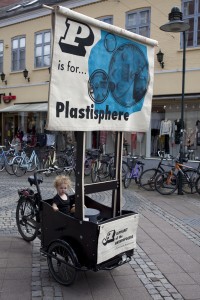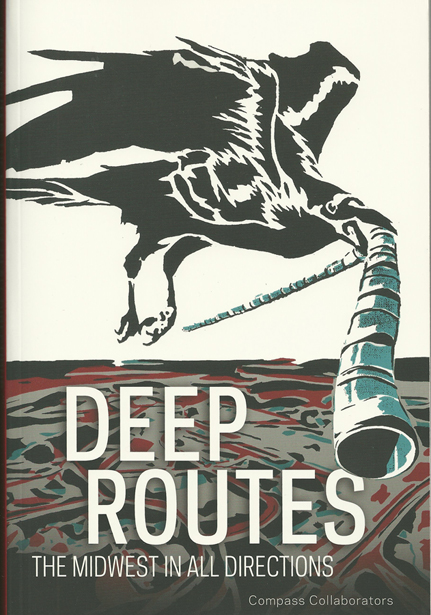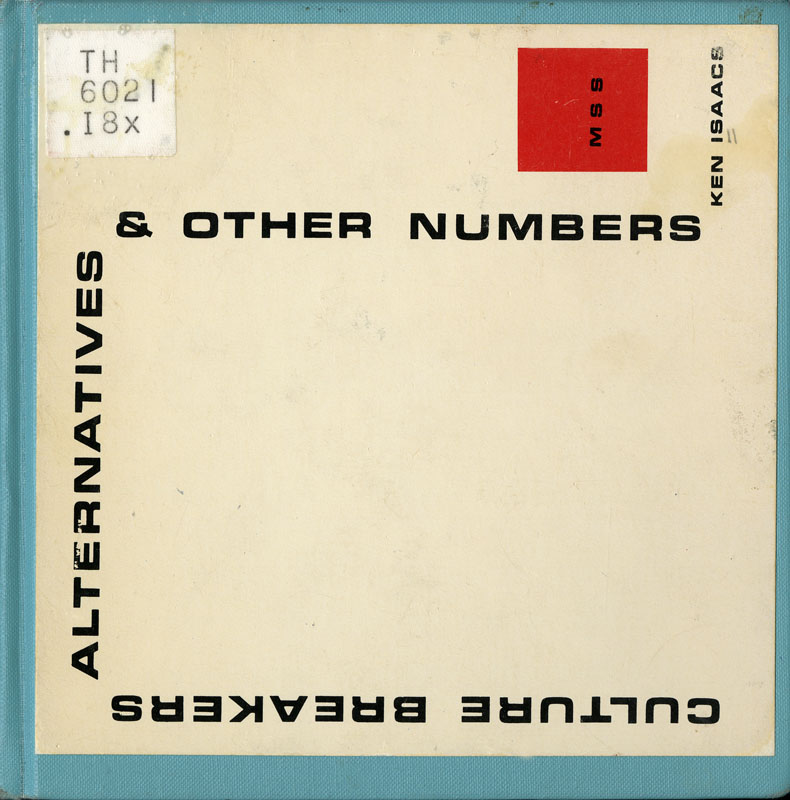Micro-Habitats No. 2: From Balcony Gardens in Belgrade, To Biosphere 2, Arcosanti, and C.L.U.I. Wendover (Part 1 of 4)
This is the second installment for MQ of reports of the micro-habitats we come across. We have a continued interest in how peoples’ behavior shapes the spaces they live in and the environments they enact. Over the past two months I have found myself in many different cities and situations and wanted to share them here in a loose gathering of photos and ideas reflecting on the micro-habitats people make, cause and leave behind. The scales vary widely from balcony gardens and giant man-made self-contained ecosystems, to entire towns.
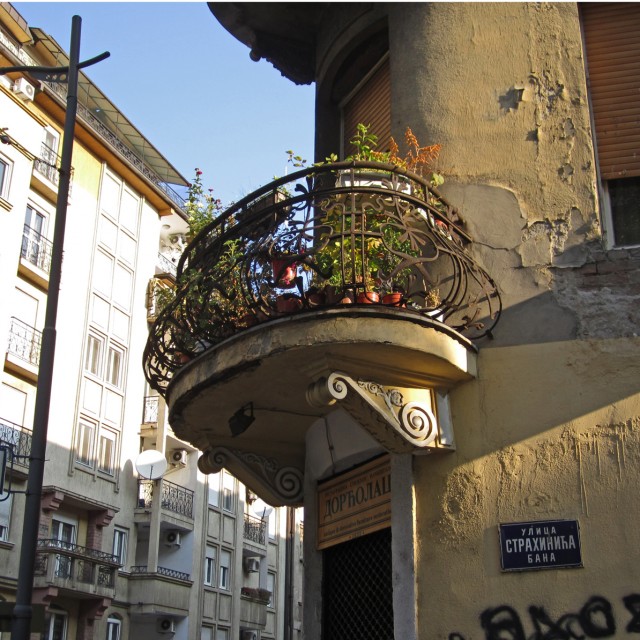
Balcony Gardens in Belgrade
Belgrade is a beautiful, troubled city that I hope to spend a lot more time in to try and understand its historical and cultural complexities. It sits on multiple fault lines between East and West, rival world religions, and former empires.
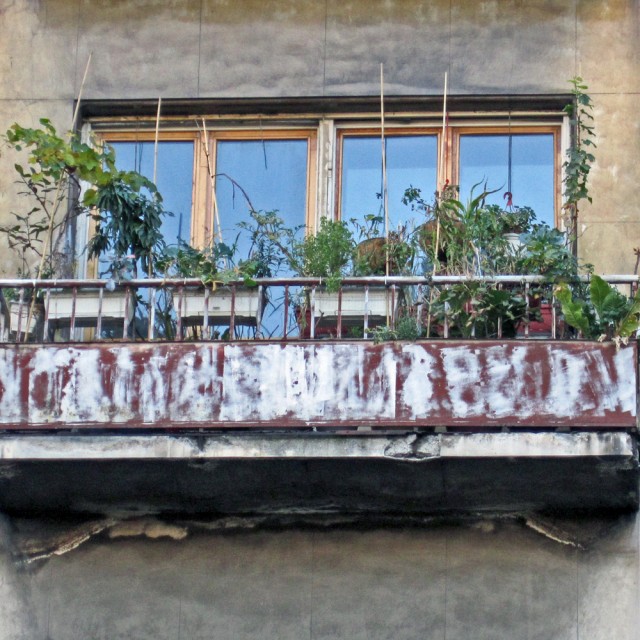
There are many balcony gardens in Belgrade. I arrived in late October, so the majority had already been taken down for the winter. There were a handful of these gardens that still had edible plants growing in them, but it was clear they were nearing the end of the cycle. One has the sense that people have been making gardens in this way as long as there have been balconies in Belgrade. It isn’t part of a trendy idea about greening the city, for example. This is instructive for thinking about resilience or integrating long term strategies for producing food in cities, or making cities healthier by increasing the amounts of plants that live in them. These things should be integrated into our daily lives over long periods of time. They should be common, easy, and not something special one has to point out. This sentiment is a strong principle that informed the “urban laboratory” of Arcosanti, which I will get to later on.
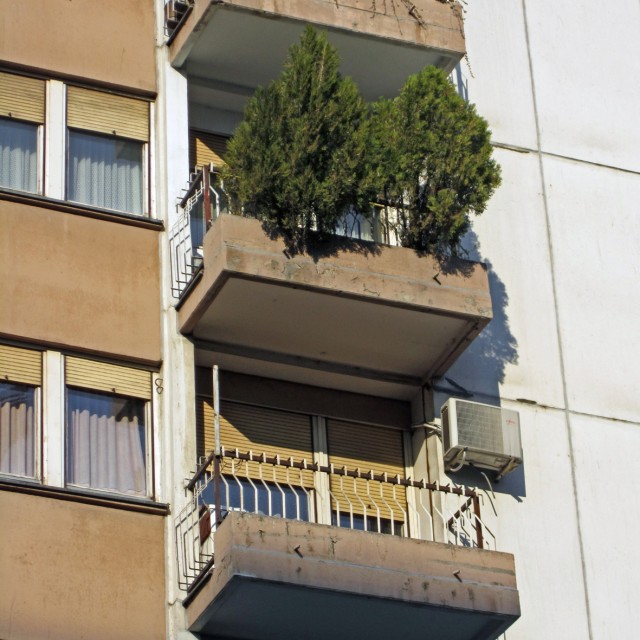
Several tall buildings in Belgrade (one is pictured above) had concrete planters built into the balconies. The planter boxes formed the outer edge of the balconies and could accommodate plants that don’t need very deep root systems. The majority of the planters looked like they got used mainly for seasonal food plants. There were also many, like the ones pictured here that held bushes and trees. It was unclear what percentage of the planters were in use or had recently been used. I would like to see these buildings again in the summer.
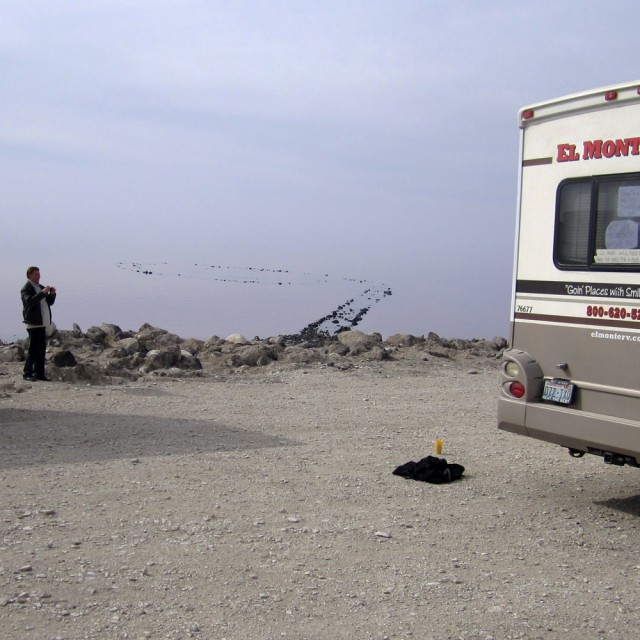
What remains of Robert Smithson’s Spiral Jetty between two of our RVs
I teach at Det Jyske Kunstakademi [The Jutland Academy of Art] in Århus, Denmark. We recently took our entire academy on a trip across the southwestern United States. This meant 40 of us in 9 RVs driving for several thousand miles in search of art in the landscape and interesting enclaves of experimentation with ecosystems and living.
The RVs are strange extensions of the human body. They are like giant moving creatures that eat, drink, use energy, and produce liquid, solid, and gaseous waste. They are micro-ecosystems that need constant attention in much the same way you would manage your own person. The close proximity of bodies inside creates an intimacy with others that amplifies your own bodily processes and needs. Our gas guzzling “beasts of burden” seemed like the perfect vehicles in which to visit the various encampments on our itinerary. They were oddly similar to the places we went where people had chosen to create relatively closed (and this is a neutral designation that could be negative or positive) systems from which to make sense of the world.
The second part of this report is about Biospehere 2 and Arcosanti.
Radio Aktiv Sonic Deep Map (2013)
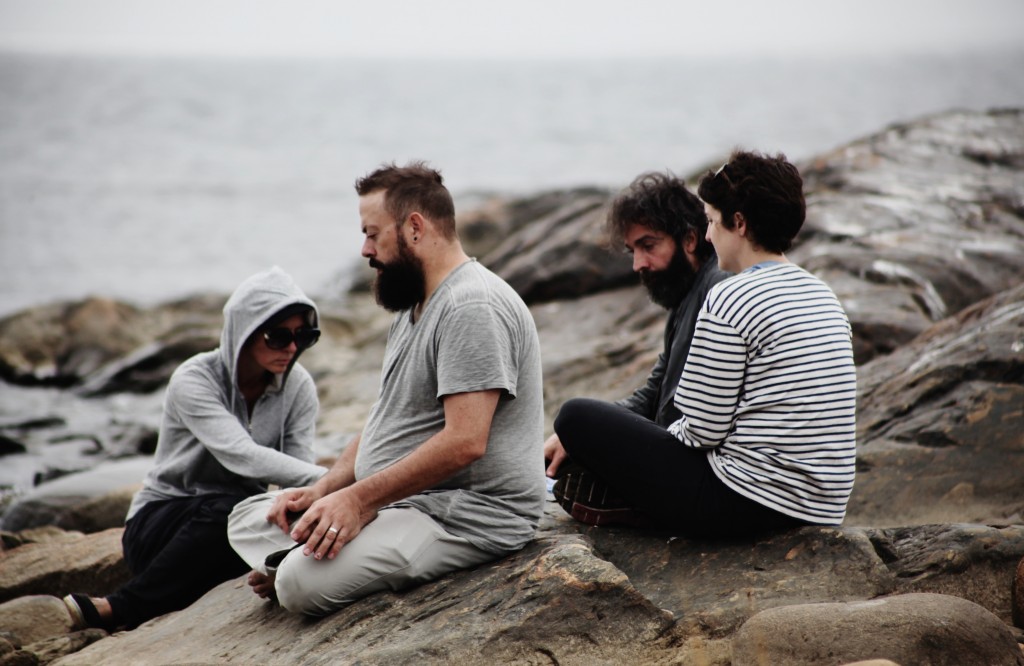
SUPERKILEN – Extreme Neoliberalism Copenhagen Style
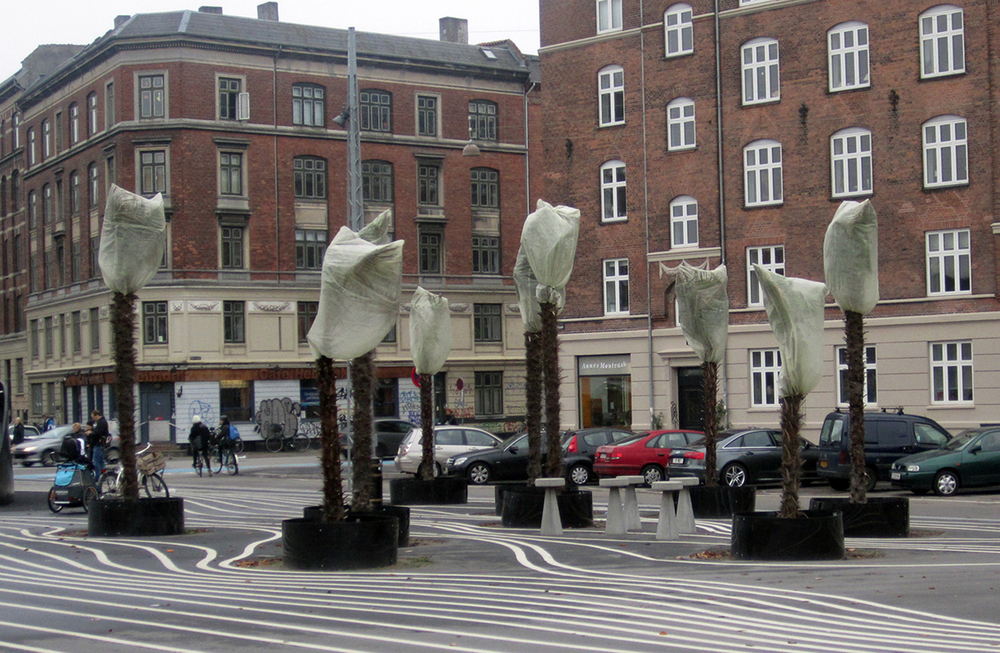
Read Brett's essay about the park.
Download our guide:
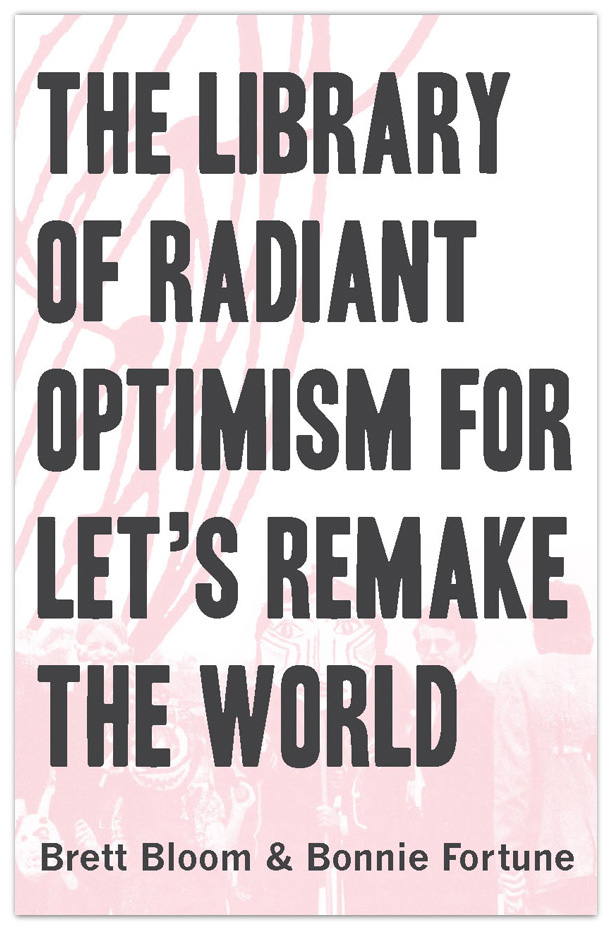
This is our guide to how-to books from the counterculture of the 60s and 70s. Click to get the download page.
Categories
- Agriculture (11)
- Animal sounds (1)
- Artist parents (19)
- Arts and culture (106)
- Bees (3)
- Book reviews (14)
- Books (18)
- Critical essays (5)
- Daily Photo (5)
- Design (36)
- Dirt (11)
- Environmental activism (43)
- Exhibitions (24)
- Farms (11)
- Forest (7)
- Friday connect (15)
- Growing (42)
- Habitat (38)
- Homesteading (16)
- Interviews (15)
- Kitchen (14)
- Living structure (9)
- MISC (15)
- Mythological (2)
- Neighborhood (83)
- Ocean News (1)
- Our Art Work (21)
- Personal – Design/Art (3)
- Play (2)
- Playground (4)
- Projects (21)
- Public space (53)
- Resilience (13)
- Sea Side (2)
- Sojabønner (2)
- Tofu (8)
- Vermont correspondence (7)
- Water (3)
- Wednesday picture (31)
- Workshop (1)
Video interview:

Watch our interview of SeedBroadcast, a mobile project that is part seed library and part seed-saving-story-collecting machine-recording the stories of seed saving, farming, and food sovereignty work being done around the US.
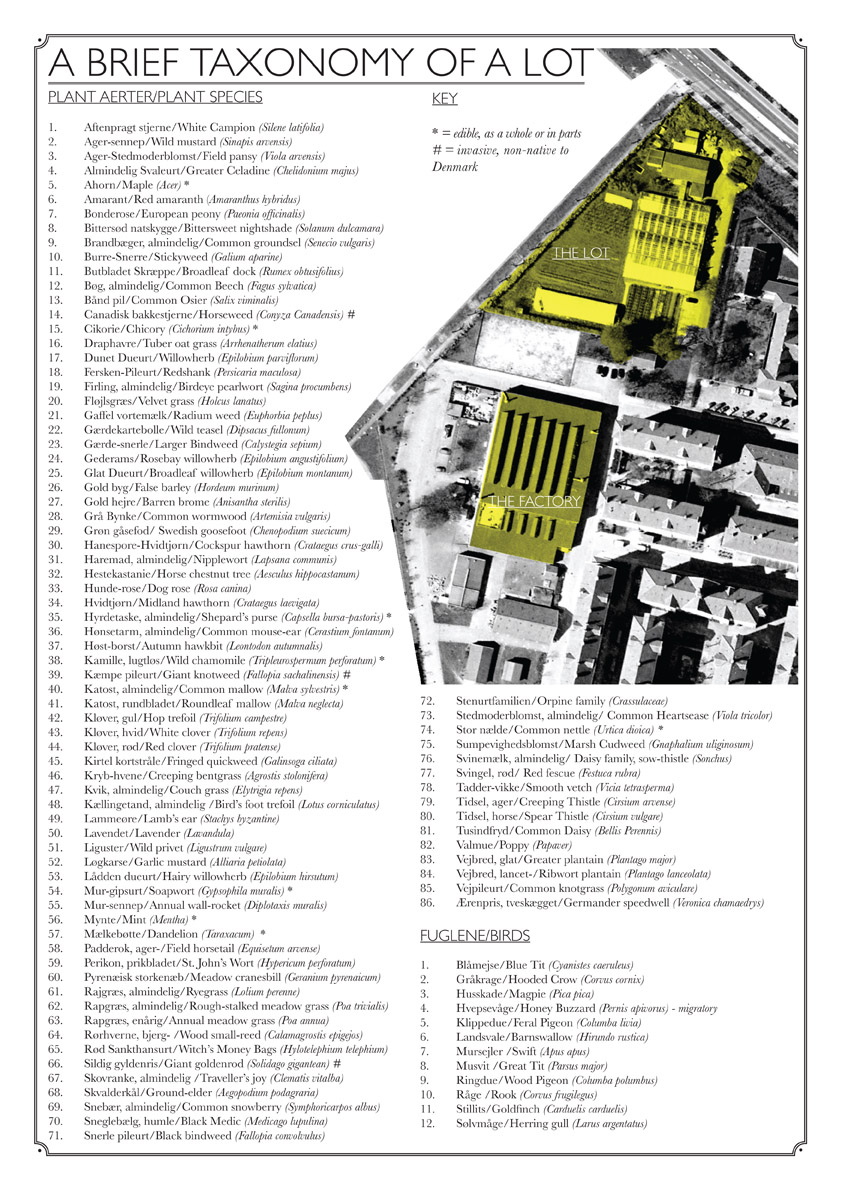
Download a poster Bonnie made about biodiversity in a vacant lot in the Amager borough of Copenhagen, in collaboration with biologist, Inger Kærgaard, ornithologist, Jørn Lennart Larsen and botanist, Camilla Sønderberg Brok: A BRIEF TAXONOMY OF A LOT

We made and installed a network of bat houses in Urbana, Illinois, to support the local and regional bat population, but also to begin a conversation about re-making the built environment.
READ MORE
BOOK REVIEW:
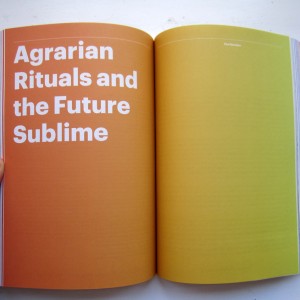
We write often about artists and art groups that work with putting ‘culture’ back in agriculture. Here is a new favorite: myvillages, a group of three women based in Germany, the Netherlands, and the UK. Read more...
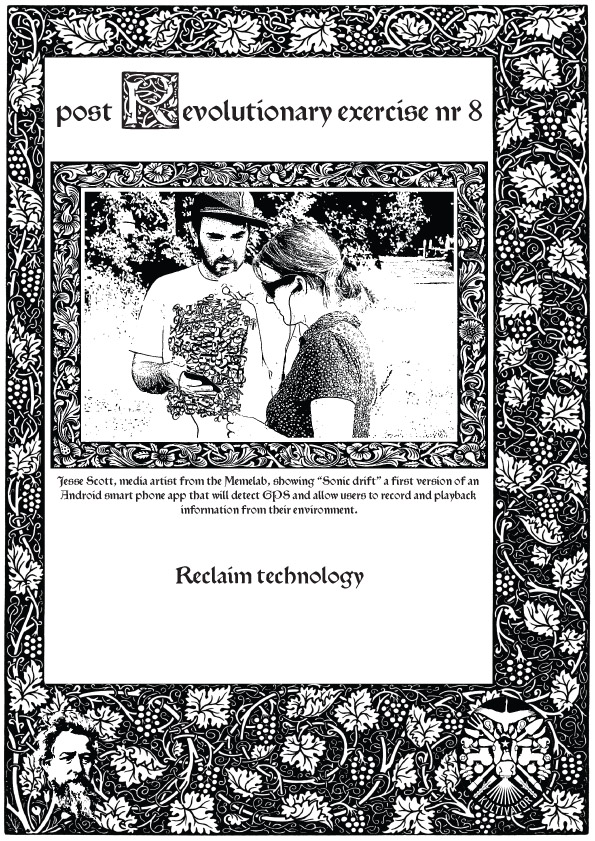
Post Revolutionary Exercises
We really admire the dedicated hard work of Kultivator who seeks to fuse agriculture and art in their work. Click this sentence to get a PDF of their poster collection called "Post Revolutionary Exercises."
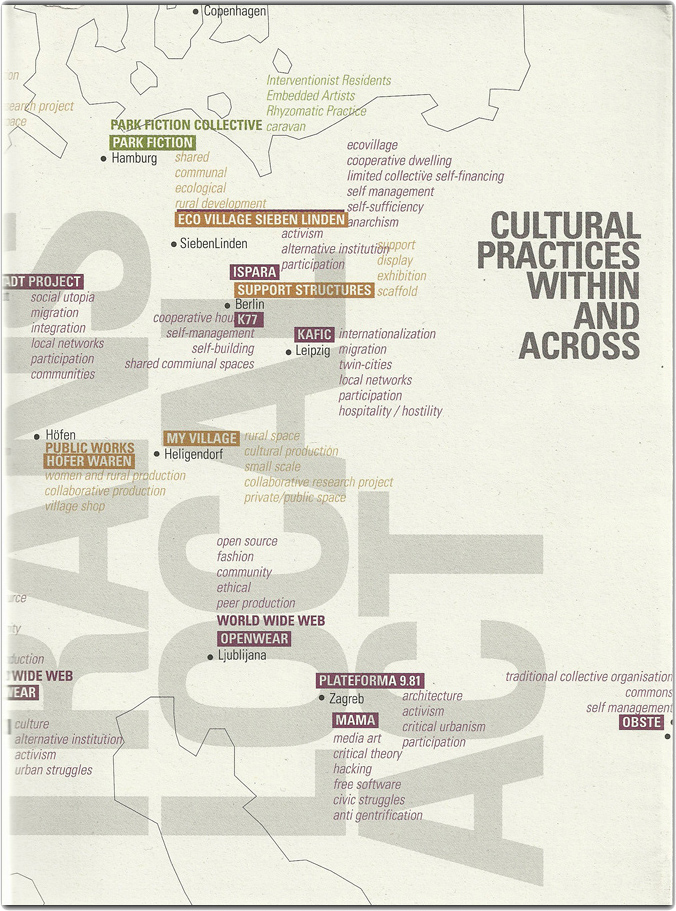
Cultural Practices Within And Across
This amazing book networks urban and rural resilience and sustainability projects around the world. Deeply inspiring projects in Romania, Paris, San Francisco, and elsewhere.
• Read our review of the book.
• Buy the book.
• Download the book.



